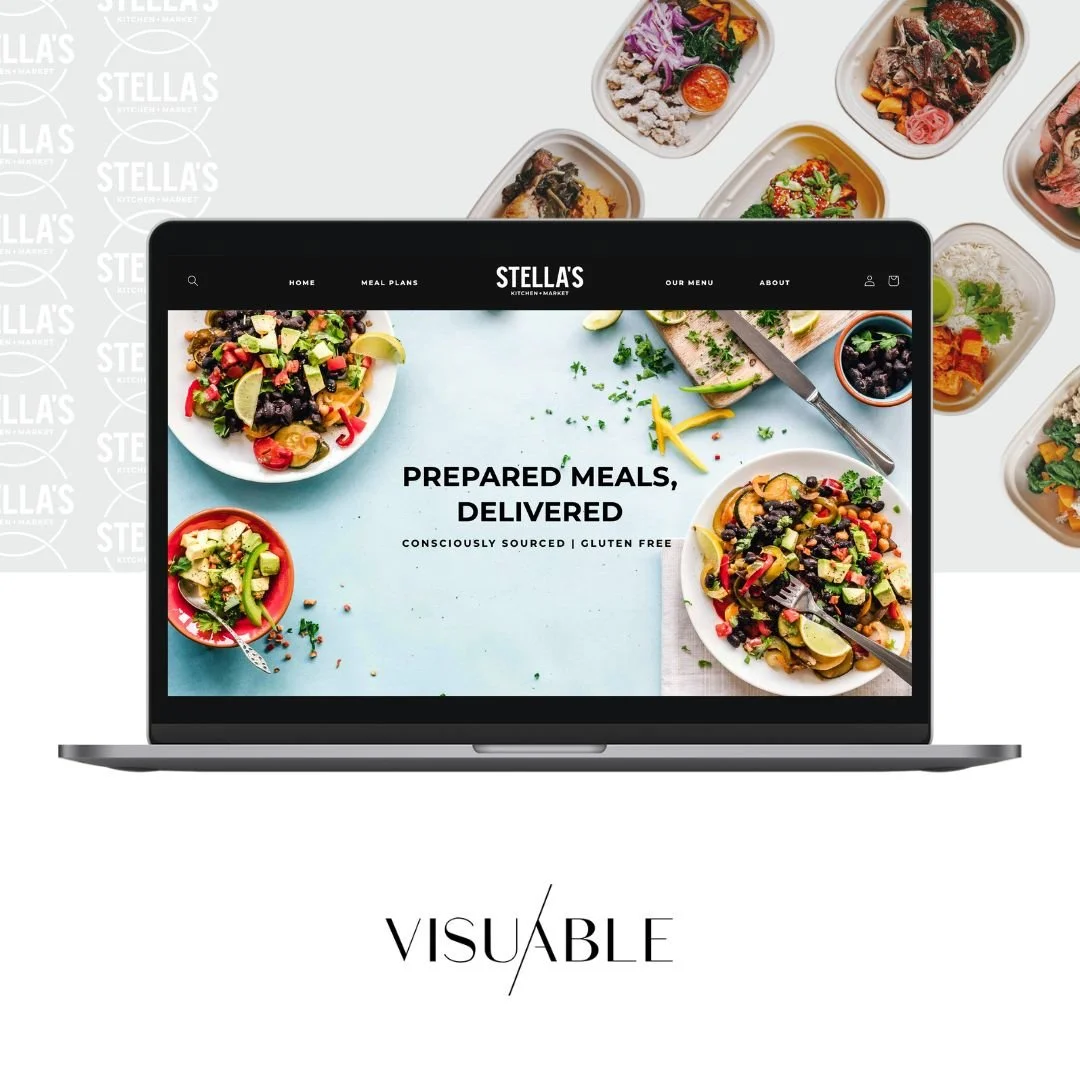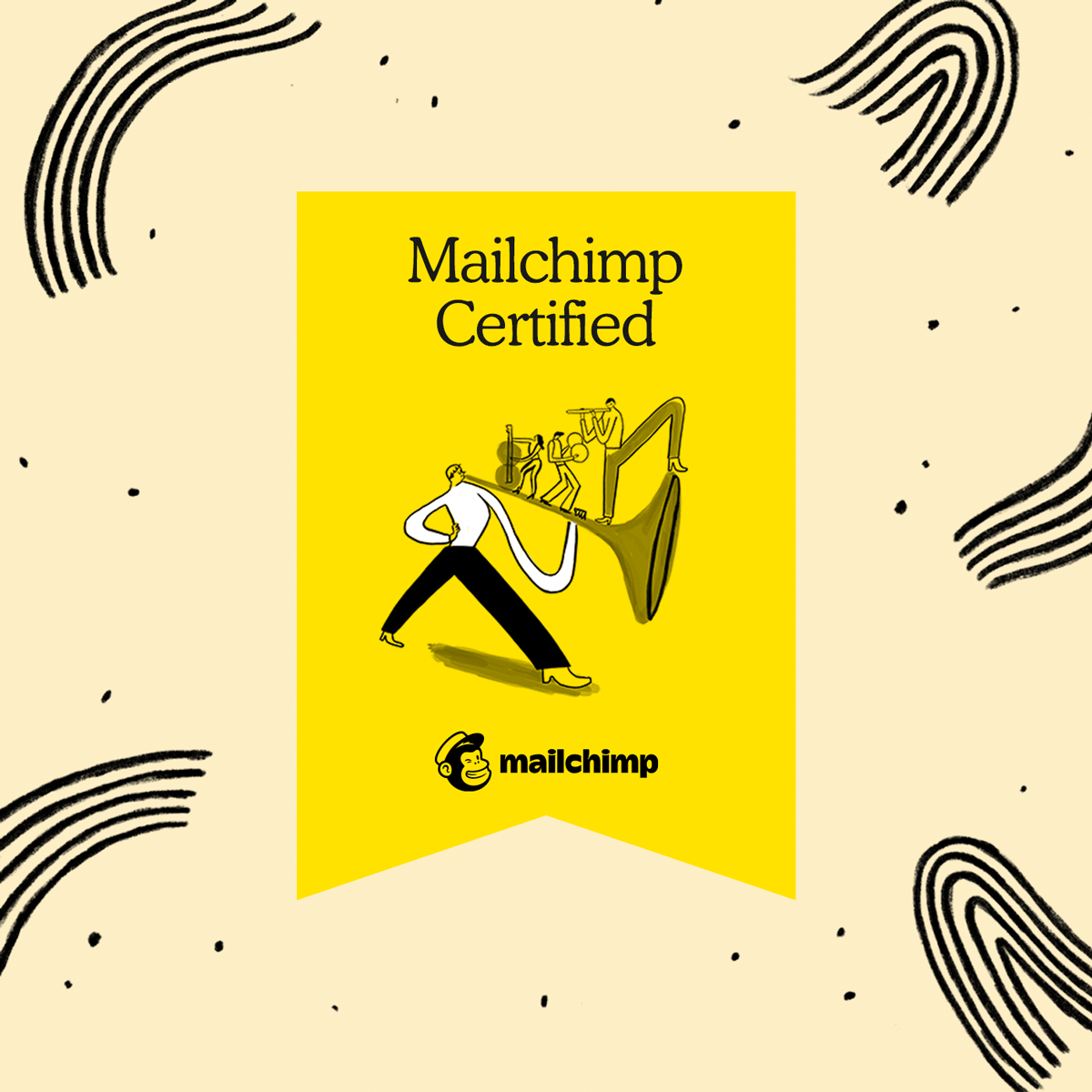How to Build a Brand Online in 12 Steps: From Scratch to Success
Branding is more than just logos and colours—it reflects your personality, values, and promise to your audience. If you're new to branding, check out our guide What is a brand? And how do I create one? to build a strong foundation before diving into these 12 steps.
When asking yourself how to build a brand online, you have to keep in mind that branding goes beyond logos and colours, it reflects your personality, values, and promise to your audience.
By defining your target audience, crafting authentic storytelling, and presenting a consistent visual and verbal identity, you create trust and recognition. Every interaction, from social media posts to customer responses, shapes how people perceive your brand. Staying clear, focused, and intentional allows you to stand out without losing your unique voice.
Ultimately, a memorable and trusted online brand fosters strong connections and sustainable growth, whether you’re an experienced entrepreneur or just starting out.
1. Defining your target audience and brand goals
Before you start choosing colours or talking about how to build your brand, it helps to truly understand who you’re serving.
Developing your brand or any brand should always start with clarity about the individuals or groups you want to attract. Need help defining your brand’s core identity? Read The Power of a Strong Brand Blueprint to map out your brand’s foundation. When you know exactly who they are, what they care about, and where they spend time online, you can shape your content and visuals in a way that makes them feel valued. For example, if your audience is mostly professionals on LinkedIn, you might emphasize a polished tone and professional imagery. If your focus is a younger crowd on TikTok, you might use more informal language and quick, entertaining visuals.
Thinking about why your audience needs your product or service is just as important as identifying who they are. If you can pinpoint the unique challenges or aspirations of the people you want to serve, you’ll naturally understand how to create branding in digital marketing campaigns to address those needs. You might start by asking yourself what solution or transformation you can offer, why you’re enthusiastic about providing it, and how you can communicate that value in a clear, friendly voice. By answering these questions, you start to develop a brand identity that feels purposeful and relevant to your audience, rather than forced or artificial.
Clarifying your objectives also plays a huge part in building a brand online. Whether you want to build your brand online to increase sales, establish yourself as a thought leader, or create a community of loyal fans, having a clear end goal helps you measure your progress. Your objectives become the compass that guides which channels to use, which style of content to create, and how to manage your overall approach. When you’re certain about the impact you want to make, everything from the choice of platform to the tone of your posts becomes much easier to decide. Clear goals transform your online branding strategy from a random assortment of tactics into a coherent plan that drives real results and fosters strong relationships with your audience.
2. Shaping your unique value proposition
Finding ways to stand out can feel overwhelming when you’re learning how to create your brand, especially if there seem to be endless competitors in your field. That’s why it’s crucial to figure out the one thing that makes you different, and it isn’t always about being the loudest or flashiest. Sometimes it’s simply about showing genuine empathy or offering a specific skill set that others haven’t mastered. Your unique value proposition (UVP) is a concise statement that captures exactly how you help people and why they should trust your offer. It should feel natural, not something forced or packed with corporate words that are difficult to understand.
For instance, if you specialise in designing a brand online for small, socially conscious startups, you might centre your UVP on how you combine sustainability with a user-friendly design. Maybe you’ve worked with numerous clients and have compelling stories that illustrate how your approach truly matters. Personal anecdotes are a powerful way to showcase how you bring something different to the table. If potential customers see that you’ve helped others in a similar situation, they’re more likely to feel that you can guide them too. Demonstrating real results is often more compelling than any extravagant tagline could ever be.
Once your UVP is defined, weave it through your entire online branding presence. Let it guide the content on your website, the tone you adopt on social media, and even the way you talk about your brand in everyday conversations. Consistency breeds recognition, and recognition builds trust. When people see the same message, values, and personality repeated, it reassures them that you know precisely who you are and what you stand for.
How we can help
We designed the Brand Blueprint package, a strategic brand consultancy service aimed at defining a brand’s messaging, positioning, and overall identity through in-depth consultancy sessions, helping businesses clarify their purpose, values, and market presence.
The Brand Blueprint Package is best suited for businesses that need expert guidance in shaping their brand strategy. For a complete brand transformation, combining both ensures alignment between strategy and design.
3. Designing a captivating visual identity
Many entrepreneurs want to create their brands without getting lost in the sea of logos and colour palettes. Visual identity is undeniably important, but it’s more than picking an attractive colour scheme or developing a fancy symbol. It’s about using visuals to convey your deeper story and approach. When developing a visual identity, think about what colours and design elements best reflect your mission and the emotions you wish to evoke. Bold, vibrant colours might work for a fitness coach known for high-energy workouts, while a muted pastel palette might suit someone offering calming wellness techniques.
Looking for inspiration? Explore Branding Inspiration: How to Design a Cohesive Brand for real-world visual branding ideas.
A memorable logo can enhance recognition but remember that a logo alone doesn’t define everything about your brand. Consider the fonts and imagery you choose, the consistency in your social media graphics, and the way your website looks and feels. Everything should align with your values and be comfortable for your audience. If your brand centres on authenticity and simplicity, for instance, choosing elaborate or overly formal fonts could confuse people about who you are. It’s also wise to think about scalability. Will your design look just as attractive on a large computer screen as on a tiny smartphone? Ensuring that every part of your branding, from your website’s main banner to your social media profile images, shares a cohesive aesthetic fosters a professional, dependable impression.
How we can help
Many individuals find that creating a brand name and logo can become a sticking point. Sometimes, it’s best to collaborate with an online branding company that has experience turning intangible ideas into designs that work.
At Visuable, for instance, we guide you through every phase of branding. The Brand Identity Design package focuses on creating the visual foundation of a brand, providing businesses with essential assets like logos, typography, colour palettes, and social media templates to ensure a cohesive and professional appearance.
The Brand Identity Design package is ideal for those looking to establish a strong visual presence combining it with the Brand Blueprint Package for a complete brand transformation, ensuring alignment between strategy and design.
4. Developing copywriting that targets your niche
“Content” often gets thrown around as a catchall term, but if your main focus is website copywriting that sells your vision and services, you should tailor it accordingly. High‐quality copy speaks directly to your potential client’s needs and pains. If your words match with their journey, they’re more likely to stick around and explore. Your landing pages, homepage, and service pages need clarity, punch, and empathy. Think of your website as more than just a digital storefront, it’s a storytelling platform that connects with your audience. A beautifully structured site with clear messaging can help visitors quickly understand what you offer, why it matters, and how they can take the next step. If you are struggling with your brand messaging, check out Website Copywriting: How to Tell Your Brand Story for expert copywriting techniques.
How we can help
At Visuable, we offer a Website Copywriting package designed to create concise, user-centred copy that not only strengthens your brand voice but also drives conversions. Our approach ensures that your website content is SEO-optimized to improve search engine visibility and attract the right audience.
Additionally, we focus on CRO (Conversion Rate Optimization) by crafting persuasive messaging that guides visitors through a seamless journey, encouraging them to take action and work with you.
5. Engaging with social media and building an online presence
Social media and online presence often go hand in hand. Platforms such as Instagram, LinkedIn, Facebook, and even newer apps can become your digital living rooms, each with its own atmosphere and style. Interacting with your followers is crucial if you want them to feel like real friends, not just numbers on a screen. Responding quickly to messages, thanking people for their support, and starting conversations about topics that matter to your community all contribute to a sense of belonging. If you’re genuinely curious about your followers’ interests and experiences, they’ll sense that authenticity and loyalty will grow.
When you’re discussing how to build a brand online, you might also consider how to integrate user-generated content. People love to share their experiences if they feel appreciated and acknowledged. Something as simple as reposting a follower’s testimonial or highlighting an inspiring story can show that you value your community’s input. This sense of two-way communication distinguishes brand-building on social media from traditional one-way advertising.
It’s also worth noting that each social media platform has its own vibe. Instagram, for example, is highly visual, making it perfect for behind-the-scenes looks and aesthetically pleasing snapshots. LinkedIn, in contrast, demands more polished and professional content. If you post a deeply personal story on LinkedIn, ensure there is a clear professional lesson or insight. Adapting your content to match the mood of each platform ensures that your audience feels seen and understood.
6. Crafting a website that reflects your vision
Your website serves as your digital home, the place people go when they want an in-depth look at your offerings, values, and background. If you’re determined to learn how to build a brand online, consider your website one of the most crucial elements of your strategy. It’s where you can invite potential clients to get to know you in a more personal, relaxed setting, without the clutter of social media feeds. That means your site’s structure, design, and content should all reflect your brand’s personality.
Visitors often decide in mere seconds if they feel comfortable enough to stay, so clarity and intuitive navigation are vital. If your brand is all about compassion, for example, your images and copy should be warm, supportive, and welcoming. If your brand emphasizes innovation, design elements might lean toward sleek, modern lines and bold fonts. Consistency matters here, too. From your homepage to the checkout page, the look, tone, and overall messaging should feel unified. This unified approach helps people trust that you put care into every detail of your online branding.
How we can help
At Visuable, we specialize in creating stunning, easy-to-manage Squarespace websites that align with your brand’s message. Our web design packages range from full website builds to design restyles and e-commerce integrations. Whether you need a quick update, a complete rebrand, or an SEO boost, we provide tailored solutions to kickstart your online presence.
7. Understanding the customer journey
Customer journey mapping is a method for stepping into your client’s shoes, envisioning the various stages they go through, from initially discovering your brand to becoming loyal fans and endorsers.
When you chart these touchpoints, you can start to see opportunities to deliver meaningful experiences. You might find gaps where people lose interest or bottlenecks that make them hesitate before converting. By identifying these moments, you can implement changes that turn potential frustrations into positive interactions, such as an interactive FAQ section on your website or more transparent product descriptions.
Paying close attention to the customer journey is particularly useful when you are building a brand from scratch. Every step contributes to how someone perceives your brand.
If a user stumbles upon an insightful blog post, then receives a friendly follow-up email with additional resources, and eventually books a call where they feel heard and understood, that cumulative experience positions your brand as trustworthy and caring. Small, thoughtful touches can form emotional connections that last much longer than any single advertisement.
Customers want to feel acknowledged as individuals, not mere numbers. Personalization is one way to achieve this. If you can recall details from previous interactions, like a preferred product type, a business milestone, or even personal interests, mentioning those in emails or follow-ups can leave a strong positive impression. These gestures show that you genuinely care about the person behind the purchase, and this kind of attention to detail can elevate your online brand to new heights.
8. Influencer marketing can be crucial
Collaborating with influencers or thought leaders who align with your values is a strategic way to jumpstart brand awareness. Influencers already have an existing community that trusts them, so if they genuinely appreciate what you offer, their endorsement can fast-track credibility. This approach can be especially beneficial if you want to stand out in a saturated field. When an influencer with a loyal following talks positively about your product or service, it feels like a personal recommendation from a friend, which tends to connect more deeply than traditional ads.
However, successful influencer marketing goes beyond just paying someone to mention you. It’s about finding the right person who genuinely connects with your mission and audience. If your focus is sustainable fashion, a collaboration with an influencer known for eco-friendly practices makes more sense than one who doesn’t actively support environmental causes. Authenticity is key; forced endorsements often feel disingenuous and can harm both your brand’s reputation and the influencer’s. By working with someone who genuinely values your offering, you strengthen your online branding message and introduce your brand to audiences who are already interested in what you provide.
Influencer campaigns can also provide you with valuable content you can reuse. If you’re working with a YouTuber, for instance, you could embed their video reviews on your website or share snippets on your social media channels. This creates a content synergy that can boost your overall marketing efforts. It’s another example of how online branding involves weaving together a tapestry of interlinked strategies, every piece works together to deliver a cohesive message about who you are and what you stand for.
9. Using SEO to excel in search results
SEO, or Search Engine Optimization, is essential when you’re focusing on how to start your own brand from scratch. Even the most beautifully designed website won’t help much if potential customers can’t find you. SEO is about understanding the search behavior of people in your niche and ensuring that your website and content match those searches. By embedding relevant keywords into your website text, blog posts, and metadata, you signal to search engines like Google that your content is relevant to those specific searches. If you want a deeper dive, read our blog on SEO for Brand Growth: Ranking Higher Online to boost your search visibility.
This doesn’t mean stuffing your copy with meaningless keyword repetitions. Instead, you want a thoughtful blend of phrases that naturally fit into your narrative. You can also optimize technical elements like title tags, header tags, and image alt text. By improving page load speed, using clean URLs, and making your site mobile-friendly, you give search engines more reasons to rank your pages higher. Quality inbound links from reputable sources also boost your credibility in the eyes of search engines. Every aspect of your online presence, from quick page load times to well-structured content, plays a role in how easily customers can find you.
How we can help
At Visuable, we recognize that SEO can sometimes feel confusing, particularly for those primarily focused on creative or strategic aspects of branding. That’s why the Full SEO Boost package is designed to simplify this process. We guide you through keyword research and help optimize your site so it’s more visible to the right people. There’s no need to get bogged down in technical jargon or guess your way around search engine algorithms. By making data-driven adjustments and continuously monitoring the results, you can maintain a strong digital presence that continually attracts the kind of audience you most want to serve.
10. Growing trust with testimonials and social proof
Establishing trust in an online setting often hinges on genuine endorsements from satisfied customers. Reviews and testimonials provide tangible evidence of your competence and reliability. When people see that someone with real-life challenges similar to theirs had a positive experience with your brand, their apprehensions can diminish. Even a few lines about how your product or service solved a problem can work wonders in building credibility.
It’s wise to highlight these endorsements throughout your online channels. You could feature them prominently on your website, share them on social media, or integrate them into email campaigns. Customer success stories, where you detail a client’s journey from problem to solution, can offer a deeper understanding of how your brand actually helps. These stories can be especially effective if you’re aiming to build my brand online in a way that speaks emotionally with an audience. By underscoring the real, human experience behind what you do, you create a bond of trust that helps potential customers feel more confident about taking the next step.
Displaying certifications or awards can also strengthen your image, though authenticity should always be the priority. Sometimes smaller, heartfelt testimonials can be more impactful than formal accolades because they highlight personal, relatable experiences. The key is to present these endorsements in a way that genuinely supports and informs the people considering your brand. Potential clients should sense that you’re sharing these stories to illustrate how you can help, rather than as a pure promotional tactic.
See What Our Clients Say!
Real feedback from real businesses.
Nothing builds trust like the words of happy clients. At Visuable, we take pride in delivering transformative brand experiences—but don’t just take our word for it! See how we've helped businesses like yours with branding, web design, and digital strategy to create impactful, recognizable brands.
11. Maintaining consistency across all touchpoints
The most successful brands don’t just pop up on social media once a day and call it a strategy. They build a consistent experience that stretches across every interaction, whether that’s an Instagram post, a LinkedIn article, an email newsletter, or a face-to-face meeting at an industry event. Consistency means more than simply using the same logo or color scheme. It’s about carrying your brand’s voice, style, and values into every piece of communication. If your tone is friendly and approachable on your website, people should find the same warmth in your email replies. If your brand stands for innovation and cutting-edge solutions, your content should always reflect that forward-thinking approach.
Maintaining consistency helps you become recognizable, which is crucial in today’s crowded digital world. People scroll quickly, and if they see a post that looks and sounds like you, they might pause to engage. Over time, consistent messaging and design build a kind of muscle memory in your audience. The more frequently people see your visuals and read your characteristic tone, the quicker they’ll remember you when they need a product or service like yours.
If you ever feel overwhelmed by the number of channels out there, it can help to create a simple brand guide that outlines your color palette, typography choices, and key phrases or values you want to communicate. This reference keeps you on track when you’re in a hurry or delegating tasks to a team member or an external consultant. When everyone sticks to the same guidelines, you can maintain a strong, polished image that makes people feel at home with your brand wherever they encounter it.
12. Navigating challenges and adapting over time
No matter how much you prepare, challenges will inevitably arise. Trends shift. New platforms pop up. Consumer preferences evolve. Even well-known brands have faced turbulent moments when they didn’t adapt quickly enough. The key is to stay agile, informed, and open to change. Pay attention to feedback from your audience, whether it’s through comments on your social media posts or insights from analytical tools. If you’re noticing a drop in engagement or a shift in demographic, think of it not as a failure but as an opportunity to refine your approach.
Experimentation can be part of the fun in building a brand online. Maybe you introduce a new format, like a short weekly live stream on social media, or try out a new color palette that feels more aligned with your evolving brand personality. Keep an eye on how these changes affect your audience’s perception. If you see positive reactions and more engagement, you’ve likely taken a step in the right direction. If not, you can pivot again, always remaining true to your core values. This is where being grounded in your brand’s mission and UVP can prevent you from losing your identity in the search for novelty.
Even if you consider your brand personality well-defined, growth can still mean rethinking certain elements. Perhaps you launch a new product line that calls for a slight shift in tone, or you start attracting a different demographic that requires you to speak about your offerings in a new way. Embracing these transitions while keeping your core brand intact demonstrates resilience and creativity. It shows that you’re in tune with both your own evolution and the changing needs of your audience, cementing your reputation as an adaptable and caring brand.
How to build an online brand that lasts
Remember that branding is an ongoing journey, not a one-time project. You won’t necessarily see dramatic results overnight, and that’s perfectly normal. What matters is your commitment to showing up consistently for your audience and being ready to adapt when needed. Stay true to your core identity while remaining flexible about how you present yourself to stay relevant. Over time, you’ll see that the relationships you build and the trust you earn carry more weight than any single marketing campaign could ever achieve.
If you’re eager to learn more or feel that you could benefit from personalized guidance, Visuable is here to help you every step of the way. Our friendly, down-to-earth approach aims to simplify your journey, ensuring you can focus on the bigger picture: building a brand online that reflects your uniqueness and draws in the people who truly need what you offer.
Final thoughts on how to build a brand online
Knowing how to build a brand online is about more than just following a list of marketing tactics. It’s about weaving together storytelling, design, and genuine human connection to create something that looks new and unique. When you start your own brand, keep in mind the significance of understanding your audience, offering real value, and staying consistent across all platforms. If you maintain a friendly, encouraging tone and stay committed to delivering top-notch experiences, your online brand will grow, thrive, and stand strong in a constantly shifting market. Whether you choose to tackle everything on your own or decide to collaborate with an online branding company like Visuable, remember that every step you take is another opportunity to refine your voice, empower your audience, and establish a memorable online presence that lasts well beyond today.
Are you ready to take the first step towards building a strong and successful online presence?
If you're ready to build your online brand, we’d love to help. Our free consultation is designed to understand your unique needs, suggest tailored solutions, and craft a personalized package and proposal that aligns with your vision.
Let's talk about how we can bring your brand to life — book a call today.






































